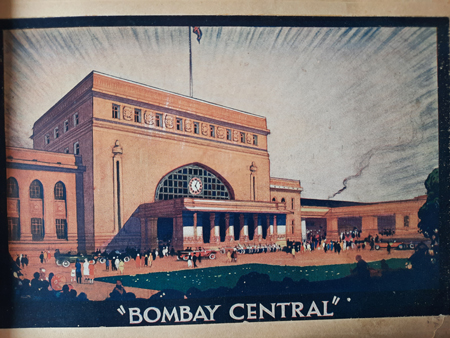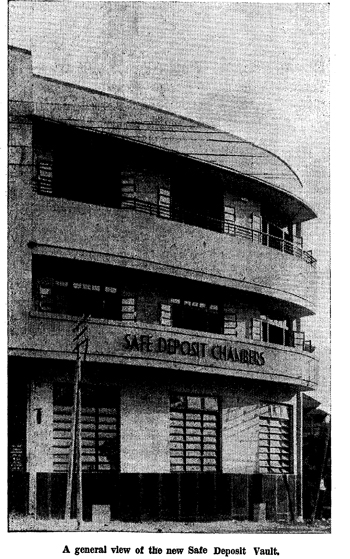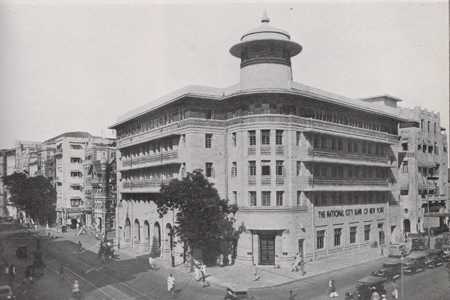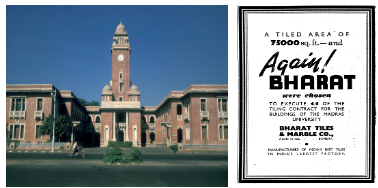100 Years
100 Stories

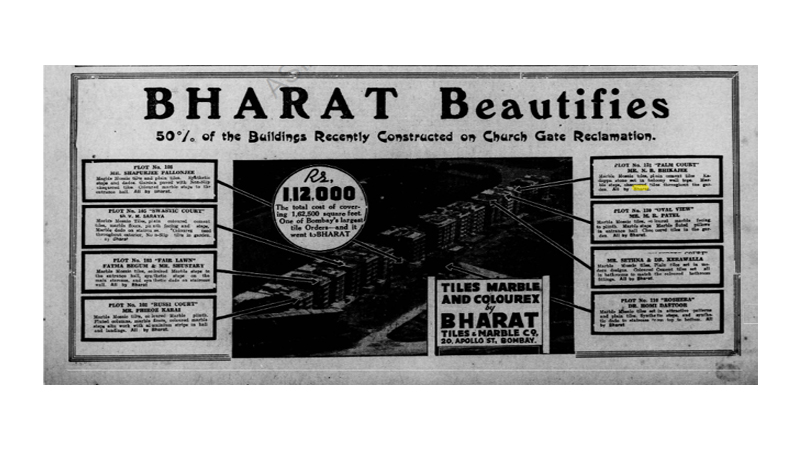
“There was no doubt that the Bharat Tiles Co. had been pioneers in the industry and every credit is due to them for their brave effort on their part in the strenuous pioneering work done by them”
- Professor Claude Batley, F.R.I.B.A
The Art Deco movement left an indelible mark on Mumbai's architecture, representing a significant phase in the city's history. With limited funds due to the 1929 depression and the burgeoning independence movement, most British firms withdrew from building campaigns in Bombay by the late 1920s. This shift in preference made room for Indian architects to carry forward the tradition of Art Deco in the city. The style was a perfect representation of Mumbai's industrial center status, which had been shaped by industrial production and distribution. The city embraced mechanization, itself a popular motif in Art Deco design. Emerging in the 1930s, Bombay Deco was the brainchild of a generation of Indian architects who returned from the West with fresh design sensibilities. These talented individuals were entrusted with the task of designing Bombay, the "Urbs Prima in Indis," known as the jewel in the British Crown. Bombay Deco beautifully blended western influences with the Indian context, creating a functionalist and non-monumental architectural style that defined the contemporary image of Mumbai from the 1930s to the late 1940s. Indian architects demonstrated resourcefulness and creativity in their designs, given the scarcity of materials and techniques compared to their Western counterparts. They incorporated large handmade architectural features and Indian decorative motifs into their buildings.
Collaborations between English and Indian architects, such as Messrs Gregson, Batley, and King, flourished. Pioneers like Master, Sathe, and Bhuta; Sykes, Patkar, and Divecha; and Mistri and Bhedwar executed the Bombay Deco tradition with finesse. These Anglo-Indian partnerships became common in the early decades of the twentieth century as the influence of architects based out of England (like George Gilbert Scott, who designed the Mumbai University) gradually declined. Responding to the changing times, Bharat Tiles and Marble, a leading company, developed a range of innovative materials like cement tiles, colored marble, and colored plaster. These materials can still be found in iconic buildings in locations such as Oval Maidan and Marine Drive. Bharat's flooring solutions and coloured cement played a significant role in creating the towering ziggurats, sensuous curved balconies, and vibrant tropical and nautical ornamentation seen in Art Deco buildings.
One notable architectural firm, Gregson, Batley, and King (GBK), played a vital role in executing various Art Deco projects in partnership with Bharat. GBK employed Bharat's products, such as terrazzo floors and colored cement facades, in buildings like the Maneckji Wadia Building and the Havero House. The collaboration extended to the Shree Pant Bhuwan, where Bharat laid marble mosaic tiles, and the Brabourne Stadium, featuring unique blue Bharat tiles. The company also implemented an elaborate flooring project consisting of mosaic and non-slip tiles to finish the floors and platforms of Claude Batley's 1930-opened Bombay Central Station.
Master, Sathe, and Bhuta, the first all-Indian-led architectural firm established in 1928, became rising stars in the Indian architectural scene of the 1930s. Their projects combined Art Deco elements with traditional motifs, challenging long-standing architectural traditions in India. Bharat's diverse product range perfectly aligned with their vision, and their collaboration resulted in remarkable structures like the People's Cooperative Bank Vault in Surat and the Mafatlal Park Buildings, which showcased Bharat's marble work and mosaic floors.
The Bombay Mutual Building had its tile and marble work done by Bharat for which they were commended. This can be seen in a Times of India article from 1940, “The Architects, Messrs. Sathe and Bhuta, are to be congratulated for their initiative in planning the interiors on modern lines and Bharat tiles and marbles have provided a wonderful demonstration of the variety of marble and tiles which can be used to beautify modern offices.”
The floor of the Tower building, which was created by Merwanji Bana and Co., was tiled with mosaic tiles in a contemporary plain design. The firm of Mistri and Bhedwar by the late 1930s was responsible for various works including mills, temples, mosques, fire temples, churches, palaces, theatres, cinemas in places as far apart as Delhi, Calcutta and Ceylon. In Bombay the Palm Court building designed by Mistri and Bhedwar featured Bharat’s marble mosaic work. The library and departmental building of the Madras University Building designed by architects Messrs. Edwards, Reids, and Booth were also paved by Bharat. The Trading Hall at the Cotton Exchange, designed by architects Sykes, Patkar, and Divecha, features upper floors covered in marble mosaic laid by Bharat.
Bharat Tiles has consistently aspired to be a steadfast partner to the best architects of its time. From its early collaborations during the Art Deco era to its ongoing commitment to setting higher benchmarks, Bharat's products and craftsmanship have contributed significantly to the architectural landscape of Mumbai. The Bombay Deco tradition lives on, a testament to the vibrant blend of Indian and Western design influences that continue to shape the city's identity.
You may also like
-
 44The Bharat Logo over the yearsGet a glimpse of the evolution of Bharat's logo, from the original "swadeshi" trademark designed when the company first started to what it stands now!Read More
44The Bharat Logo over the yearsGet a glimpse of the evolution of Bharat's logo, from the original "swadeshi" trademark designed when the company first started to what it stands now!Read More -
 45Kala Ghoda Festival and RevivalFrom locating the original moulds to experimenting and producing tiles for display at the first Kala Ghoda Festival - Take a look at the impact the exhibition had on the company, revitalizing their heritage-range of tiles and giving Bharat a fresh leash of life.Read More
45Kala Ghoda Festival and RevivalFrom locating the original moulds to experimenting and producing tiles for display at the first Kala Ghoda Festival - Take a look at the impact the exhibition had on the company, revitalizing their heritage-range of tiles and giving Bharat a fresh leash of life.Read More -
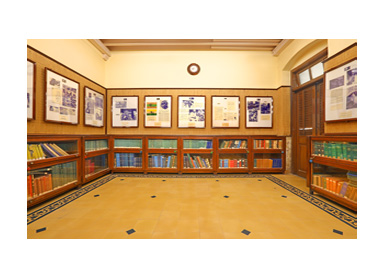 46Challenge of RestorationWith Bharat’s brand revival came a flurry of restoration jobs in a heritage sector that had been waiting for expertise in production and execution. Read about how Bharat dealt with the challenges that came with restoring heritage buildings and played a critical role in restoring floors of famous heritage sites across India.Read More
46Challenge of RestorationWith Bharat’s brand revival came a flurry of restoration jobs in a heritage sector that had been waiting for expertise in production and execution. Read about how Bharat dealt with the challenges that came with restoring heritage buildings and played a critical role in restoring floors of famous heritage sites across India.Read More


